October itinerary in Japan Day 3 ( Fukui Day 1 Meal edition)
(Friday, October 22)
Table of contents
1. Lunch “Sanrakutei”
For lunch on the third day (October 22nd), I had “Oroshi soba” at Sanrakutei near Eiheiji temple. “Oroshi soba” is soba made by putting grated radish on soba (or putting grated radish in soba soup). I love “Oroshi soba” and it is the most favorite way to eat soba.

It is famous as “Echizen Oroshi soba” in Fukui prefecture. It is said that the history of soba in Fukui Prefecture began when Takakage Asakura built a castle in Ichijodani (1473 ~). Soba can be harvested in about 75 days after sowing, so it seems to be useful as food for siege during the Warring States period.
Soba in Fukui Prefecture became famous nationwide after World War II. When Emperor Showa came to Fukui prefecture in 1947, he ate two bowls of Oroshi soba. Even after returning to Tokyo, he said that “Echizen Oroshi soba was very delicious”, so it seems to have become famous. “Echizen Oroshi soba” has been selected as one of the “100 Best Local Cuisine” in Fukui Prefecture by the Ministry of Agriculture, Forestry and Fisheries.
However, the famous soba noodles from Fukui prefecture are not included in the three major soba noodles in Japan (“Togakushi soba” in Nagano prefecture, “Izumo soba” in Shimane prefecture, and “Wanko soba” in Iwate prefecture). I would like to include soba in Fukui prefecture as one of the three major soba noodles in Japan because of its deliciousness.
In January 2020, 50 soba appraisers judged the “Delicious Soba Producing Area Award 2020” and Fukui Prefecture was selected as the first place. It seems that not only me but also soba professionals think that soba in Fukui prefecture is delicious. Ibaraki prefecture was second, Toyama prefecture was third, Shimane prefecture was fourth, and Gunma prefecture was fifth.
In February 2021, Fukui Prefecture won first place in the Internet questionnaire survey “Prefectures where soba is delicious” on the Internet media “Netorabo”. Fukui Prefecture was overwhelmingly number one with 7,923 votes. Yamagata Prefecture (5,507 votes) was second, and Nagano Prefecture (1,509 votes) was third.
Sanrakutei’s “Oroshi soba” was delicious with handmade soba, but the amount was small and the price (Yen 990) was high. However, the service of the restaurant staff was very good. At first, I wanted to eat at the most popular soba restaurant around Eiheiji temple, “Teraguchi”, but unfortunately the day I visited was closed. Next time, if I have a chance to go to Eiheiji, I would like to try “Teraguchi”.

2. Snack “Ikkyu”
As I mentioned when I visited Natadera temple on the first day of my trip, Eiheiji temple is also famous for “Goma (sesame) tofu”. After visiting Eiheiji, I had Goma tofu at “Eiheiji Sobatei Ikkyu” in front of the bus stop while waiting for the bus to Ichijodani Asakura Ruins. After all, Goma tofu is delicious. However, it was very small compared to Goma tofu at Natadera. It was a healthy snack. As the name suggests, “Eiheiji Sobatei Ikkyu” is mainly made with soba noodles. If I have a chance, I would like to eat grated soba at this shop as well.
Curiously, we can buy bus tickets at this shop. It is safe to buy a ticket before getting on the bus.
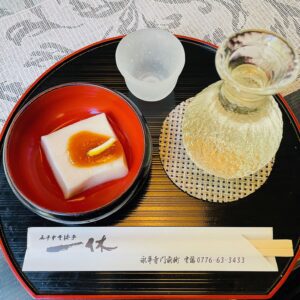
3. Supper “Kappo Yoshijin”
After returning to Fukui Station from the Ichijodani Asakura Ruins, I had dinner at “Kappo Yoshijin”, which is about a 3-minute walk from Fukui Station. It is an excellent restaurant with many menus as well as seafood caught in the Sea of Japan.
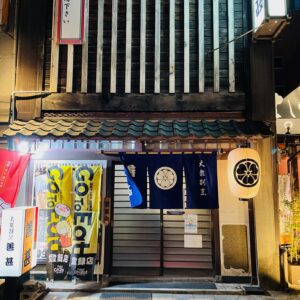
On this day, I ate assorted sashimi (yellowtail, Japanese amberjack, northern shrimp, great amberjack, Japanese sea bass, sea bream), fried Japanese glass shrimp, mozuku (cladosiphon okamuranus) vinegar, dadami (shirako, cod milt ) ponzu, heshiko-yaki, and Takeda Aburaage (deep‐fried tofu).
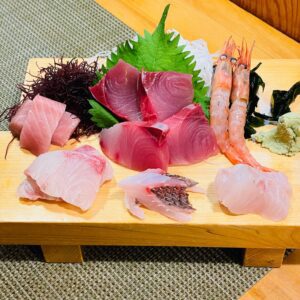
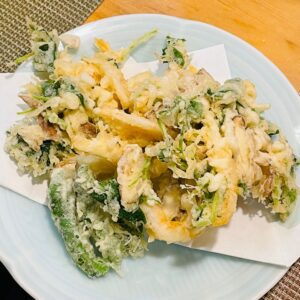
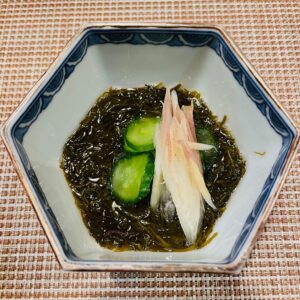
It was a little early on October 22, but Wakasa’s Japanese amberjack (season is from November to February) is the winter “PRIDE FISH” chosen by Japan Fisheries Cooperatives. Japanese amberjack was already delicious enough.
Dadami (Shirako, cod milt ) ponzu is also in season after November. However, I love Shirako ponzu so I ordered it. In Fukui prefecture, Shirako is called Dadami. It is also called Dadami in Ishikawa, Toyama, Niigata, Akita, and Yamagata prefectures. On the other hand, in Aomori Prefecture and Hokkaido, Shirako is called Tachi. It is also fun to know that the name changes depending on the region.

“Heshiko-yaki” was too salty for me. “Saba no Heshiko” is made by salting mackerel from which the internal organs have been removed and then pickling it in kasuzuke (preserved food in sake cake). It is eaten as it is or baked. “Saba no Heshiko” has been selected as one of the “100 Best Local Cuisine” in Fukui Prefecture by the Ministry of Agriculture, Forestry and Fisheries.
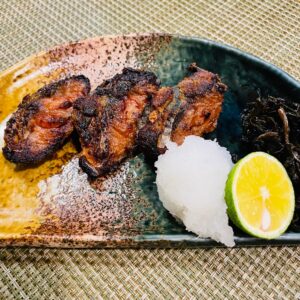
“Takeda Aburaage” is deep‐fried tofu from the long-established store Taniguchiya (founded in 1925) in Fukui prefecture. According to a household survey by the Ministry of Internal Affairs and Communications, Fukui City ranked first in terms of the amount of consumption per household (family of two or more) in 2020 for “Aburaage / Ganmodoki (fried bean curd cake with vegetables and other ingredients in it) “. The average consumption amount was 6,197 yen in Fukui City, which was more than double the national average of 3,027 yen. By the way, the second place is Toyama City for 4,815 yen, so Fukui City’s lovers of Aburaage (Ganmodoki) are considerable.
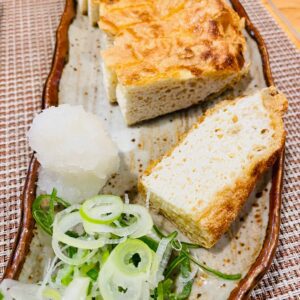
Note: The departure / arrival times, fees, admission fees, etc. of transportation listed in the text are as of the time of writing the BLOG. They may change in the future, so please check for yourself when you go on a trip.